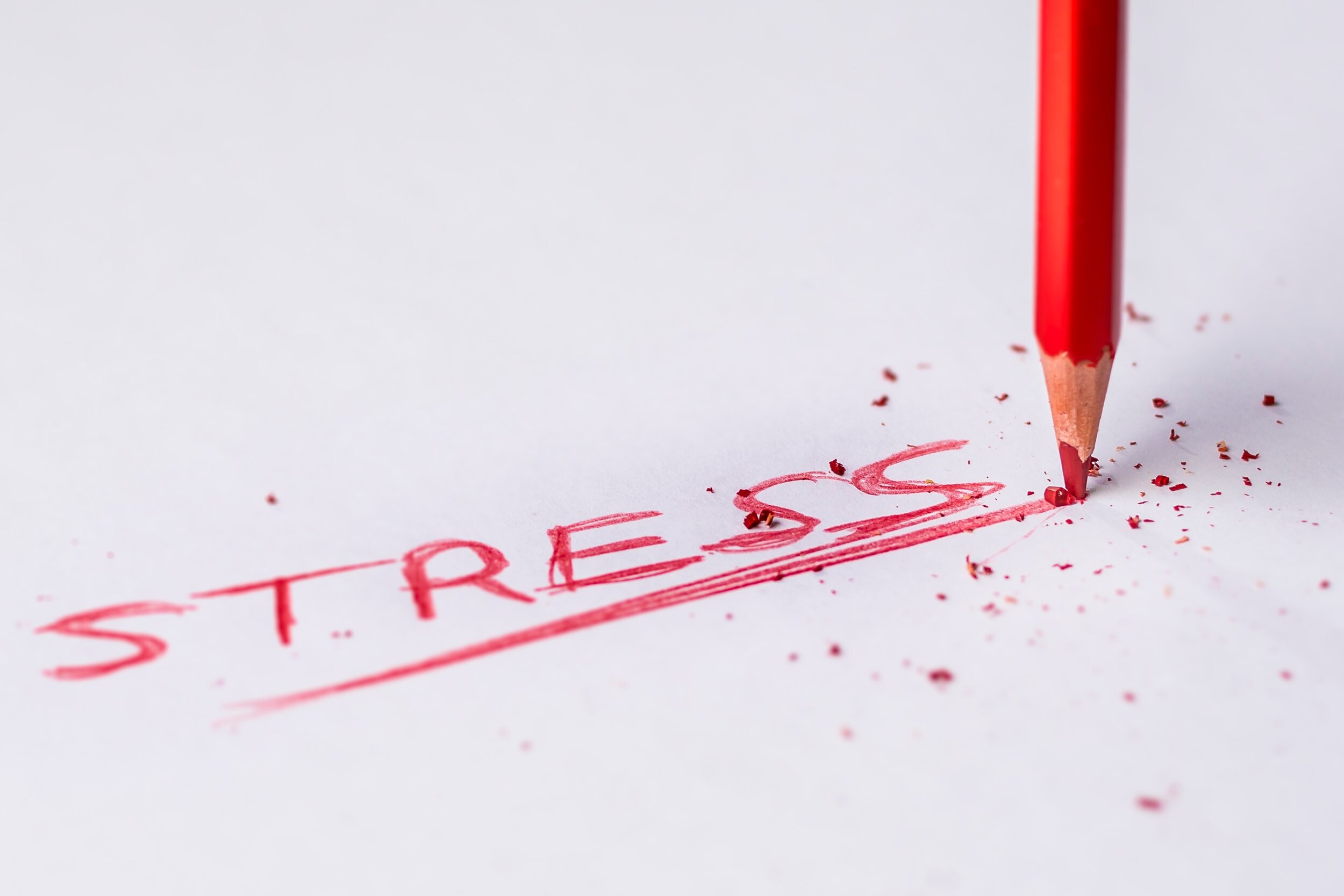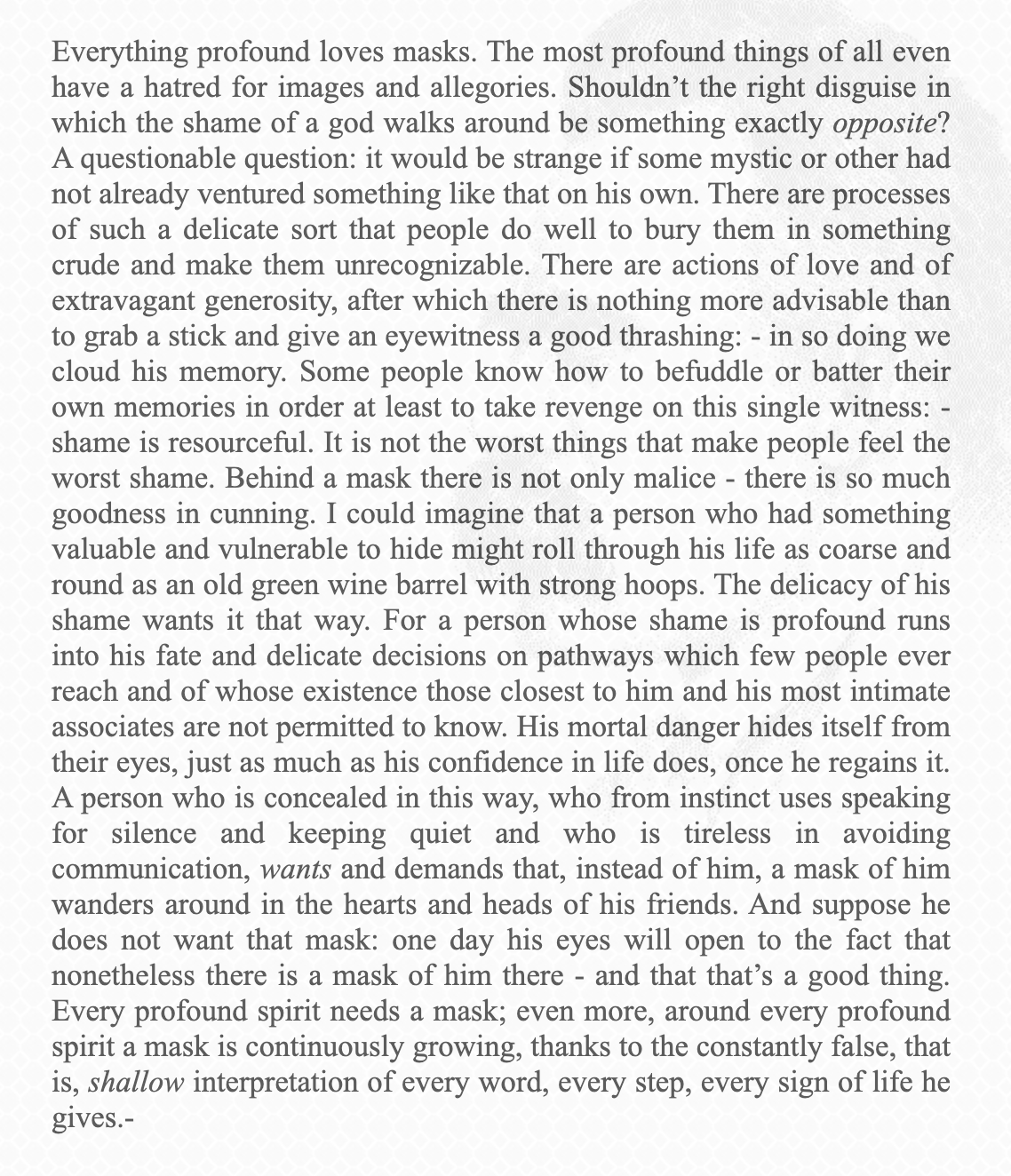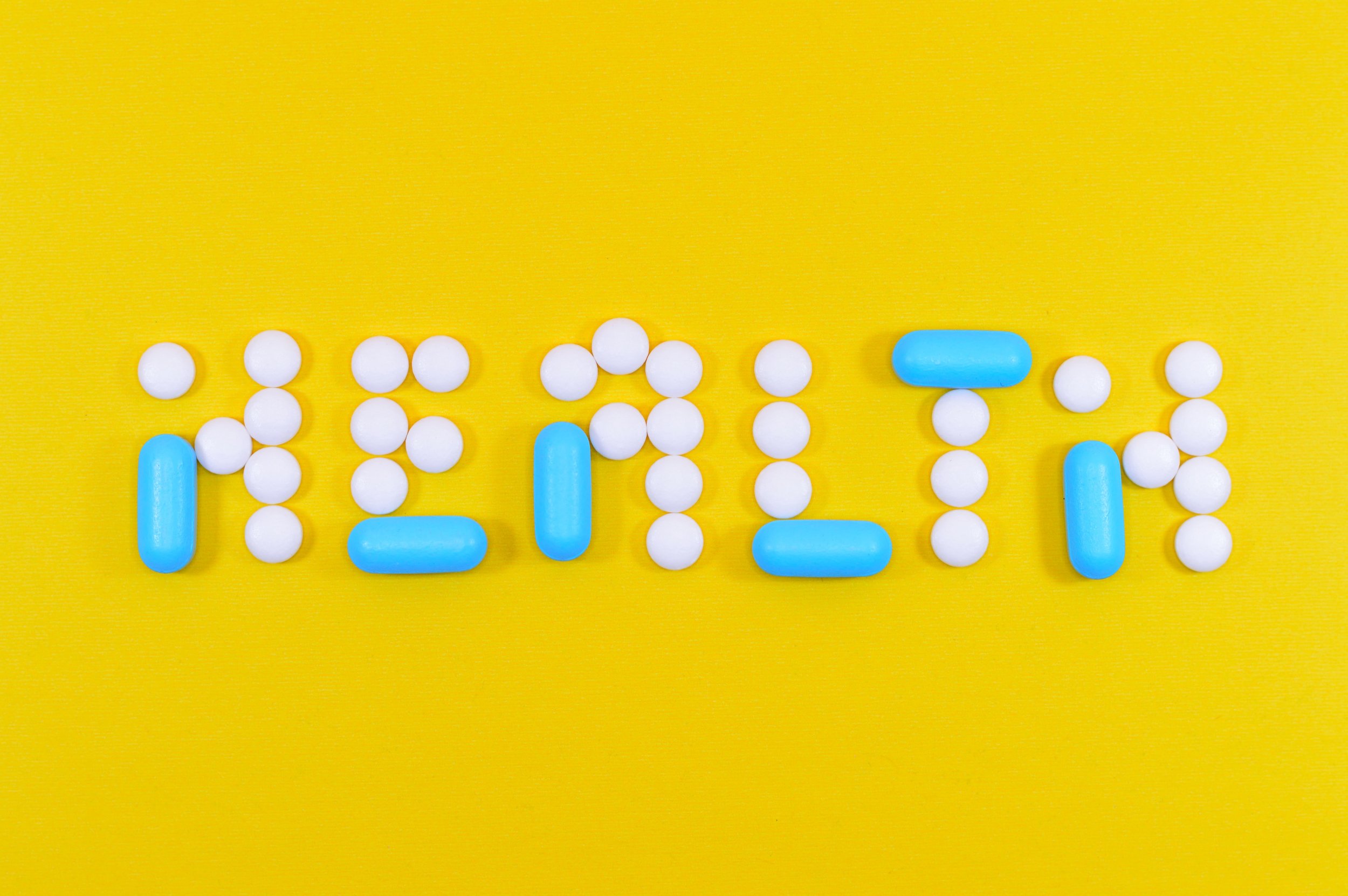Anxiety Medications
One thing that’s not clear to most patients is that there is a huge number of different medications that can be used to treat anxiety. Obviously, the point of this post is breadth rather than depth, and there is so much more to say about any one of the categories mentioned here - but we hope that this will provide a helpful overview for patients and will help them feel more prepared when walking into a prescriber’s office.
The topics we are going to touch on in this post are: 1) which classes are useful for which types of anxiety disorders, 2) general pros and cons of each class, and 3) basic mechanisms of action of each group.
Keep in mind that while medicines can be helpful for many, it is important to always stress the need for a holistic treatment plan including (but not limited to) psychotherapy, exercise, nutrition, mindfulness training, work life balance, social support, and so on. In our experience, those relying on medications only may be more likely to experience tolerance to medications over time. The decision of which medicine should be tried should always be made after a complete in person evaluation, which this blog is not meant to supplant.
Selective serotonin reuptake inhibitors
These include fluoxetine (aka Prozac), paroxetine (aka Paxil), sertraline (aka Zoloft), fluvoxamine (aka Luvox), citalopram (aka Celexa), and escitalopram (aka Lexapro). They tend to be the first line choice for multiple anxiety disorders and depression. They are technically classified as antidepressants (which is a poor and oversimplified classification, but we don’t yet have a new and better system).
Sertraline is FDA approved for multiple conditions including: Major Depression, OCD, PTSD, Social Anxiety, Panic Disorder, and Premenstrual Dysphoric Disorder. While not all SSRIs have this many FDA approved indications, we often use the other ones for the same conditions. Pharmacy companies do not always bother pursuing FDA approvals due to cost reasons and the realization that the meds will be used off-label. It is completely legal and ethical to use medications for off-label purposes, but ideally the patient and provider should have a discussion about this first.
While SSRIs can have an immediate effect, the full effect can take anywhere from 3-8 weeks (even longer sometimes) depending on the person. They are generic and cheap. I tend to prefer generic meds b/c they have been around longer with a proven track record, and the risks are known too (as opposed to medicines that get taken off the market relatively soon because a new side effect is discovered). This is my style, and there is certainly nothing wrong with those who do prescriber newer meds (which I also do on occasion).
While they are overall fairly well tolerated and arguably with less side effects than older classes of antidepressants, some people may be more sensitive to side effects of this class (e.g. sexual side effects like decreased libido or difficulty with orgasm) and may do better with older classes like tricyclic antidepressants or MAOIs (these classes are discussed below).
In this class, the risk of discontinuation syndrome (aka SSRI withdrawal) will be greatest with paroxetine. Most people do not have significant symptoms of this syndrome when they wean off slowly, but a small subset of people are quite sensitive to such and struggle to wean off. This syndrome will be much greater with medicines with short half lives including paroxetine and the SNRIs discussed below, but can also occur with other SSRIs mentioned above (but less so with the others). Again, typically this is a mild or absent syndrome, but some are more sensitive than others to it.
The mechanism of action of any anxiety medication can never be truly understood as it’s virtually impossible to prove cause and effect in research of these types of meds (as compared to antibiotics, for example, in which the mechanism of action is quite clear). That being said: one mechanism of action of SSRIs may be boosting serotonin levels in the brain. Research also shows these meds may also enhance glial cell function (these are brain cells that support, nourish, insulate and protect the brain neurons), and increase BDNF levels (brain derived neurotrophic factor). Many people presume the serotonin boost is the main mechanism, but this is not necessarily true. The other mechanisms I mentioned tend to peak in effect at 1-2 months, and this actually correlates more with the timing of the peak therapeutic effect in some people.
These may be a good choice for those experiencing both anxiety and depression. However, sometimes higher doses can be overstimulating and contribute to anxiety. This may be less likely with citalopram and escitalopram. Sometimes even low doses can trigger anxiety in certain people. I know it sounds paradoxical that the medicine being used to help anxiety can trigger it instead. This at least partially reflects many issues including the fact that while we have come a long way in psychiatry with psychotropic medicines, we still have a long way to go. The prescribing of anxiety meds is not an exact science at all.
While people can theoretically abuse any medication (esp something sedating or stimulating, even things like over the counter Benadryl), SSRIs (and all the other antidepresant classes mentioned below) are generally not thought of as addictive.
Some research shows when treating OCD, you need higher doses, and it takes much longer to get peak effect. However, some clinicians question the validity of such research.
Paroxetine is not ideal for elderly patients. It may also have the most potential weight gain within this class of medications.
Serotonin–norepinephrine reuptake inhibitors
These include venlafaxine (aka Effexor), duloxetine (aka Cymbalta), desvenlafaxine (aka Pristiq), levomilnacipran (Fetzima), and milnacipran (Savella). These are very similar to SSRIs; in fact, some SSRIs are more closely related to SNRIs than others. Venlafaxine actually acts as a SSRI at low doses and turns into an SNRI at higher doses. Most of the comments I made above about SSRIs also apply to SNRIs.
One difference is they also boost more noradrenaline in the brain, and not just serotonin (but some SSRIs also boost noradrenaline).
In theory, any antidepressant could also treat pain. However, duloxetine does have an FDA approval to treat certain kinds of pain. It’s possible SNRIs have more ability to treat pain than SSRIs because of the boost in noradrenaline.
Milnacipran (Savella) is actually only FDA approved for fibromyalgia, and not any specific anxiety or depressive condition (but still might help latter).
Benzodiazepines
These include (but are not limited to) alprazolam (aka Xanax), lorazepam (aka Ativan), clonazepam (aka Klonopin), and diazepam (aka Valium). These are quick acting. They will have an immediate effect (minutes to hours) rather than weeks for maximum effect like the SSRIs and SNRIs. However, there can also be a cumulative effect over the 1st 2 weeks (or potentially longer for some like diazepam because it has an extremely long half life of 20-100 hours).
These can be highly addictive. These are dangerous and potentially fatal to mix with alcohol; some patients even report synergistic effects between alcohol and the other antidepressant classes mentioned, but that combination is still safer (on average) than mixing benzos with alcohol.
Some recent research describes a possible association between long term benzo use and dementia. This is not well understood or proven yet. However, benzos are somewhat similar to alcohol, and even used for detoxing from alcohol. Severe and chronic alcohol use is known to cause dementia. Thus, it would not surprise me if benzos were related to dementia. On the flip side, there are likely a subset of patients who do fine on small to moderate doses of benzos long term. These can also be dangerous to mix with other addictive drugs like opiates.
Alprazolam is the most addictive in this class, partially because it’s very quick acting and with short duration. Any quick acting benzo is more likely to lead to rebound anxiety. This occurs when the medicine wears off. Then, the anxiety is higher than before the medicine was taken. This can lead to use of higher and more frequent doses, fueling potential addiction. Because of this, I rarely ever start someone on alprazolam. It’s extremely hard to get off of. I almost always use lorazepam instead.
Quick acting ones will provide quicker relief but not last as long. Long acting ones will provide longer duration of effect, and thus one might need 1-2 doses per day rather than 3-4. Benzos are not good for the elderly (especially the longer acting ones) as they can cause sedation, falls and confusion; this class of meds is the #1 medication cause of falls in the elderly.
They work through potentiating GABA receptors. They can also act as muscle relaxants and antiseizure meds, so may be a good choice for those with these problems as well as anxiety.
You always want to wean off these to prevent severe and potentially fatal withdrawal. This can happen even if you’re not addicted. That is, there is a difference between addiction and physiological dependence; physiological dependence is one part of addiction. Even if you’re not addicted to any medicine, your body can get so used to it that severe withdrawals (and even death) can occur if you stop abruptly (that is, if you go “cold turkey”).
Buspirone
This is a unique medicine in its own class that treats mainly generalized anxiety, but some research shows possible synergistic effect with antidepressants in treating depression. This is not addictive and on average much safer than are benzos.
Its mechanism of action involves effects on serotonin, dopamine, noradrenaline and GABA systems on the brain. This does not typically have an immediate effect, but rather 1-2 months for peak effect like the antidepressants. That being said, I have seen patients who report noting some immediate effects as well.
Beta blockers
These include propranolol (aka Inderal). All use of this class is off label (i.e. not FDA approved) for anxiety. Beta blockers work by blocking the effects of the hormone epinephrine, also known as adrenaline (mediated by actions at beta receptors).
These can be very helpful for specific types of anxiety like performance anxiety (e.g. public speaking), or social anxiety. These have at least 2 big advantages compared to the other classes (especially benzos): 1) they are not addictive, and 2) they do not have cognitive side effects. In other words, when some people take benzos for performance anxiety, while the anxiety is much better, their head is not clear (which then affects the task at hand which is triggering the anxiety).
They are typically prescribed for high blood pressure, so someone with low blood pressure may want to avoid such. They are also contraindicated in patients with certain types of heart disease like heart failure or bradycardia (aka low heart rate) or asthma. Initial research from years ago showed these meds could worsen depression. More recent research has questioned this association.
Other antidepressants
These include mirtazapine (aka Remeron), trazodone (aka Desyrel) and nefazadone (aks Serzone). These are typically quite sedating, so are taken at night and can help sleep. Some patients report a “hangover” like effect, but this sometimes goes away with time as the body adjusts to the medicine. With all these meds (including the other classes mentioned) there can be immediate side effects or ones that appear over time. Sometimes they go away with time, but not always. It depends on the person, the medicine, and the side effect. The general mechanisms of these are at least partially similar to the SSRIs and SNRIs (e.g. boosting serotonin), but they also work at different receptor sites in the brain.
Mirtazapine may be more calming than other antidepressants for some people. Mirtazapine can also help appetite and sometimes is used off label exclusively for severe appetite and or weight loss. So it is good for those whose depression or anxiety has led to loss of appetite and weight. On the other hand, they may not be ideal for those who are overweight. Mirtazapine does have more weight gain than most other antidepressants on average. Mirtazapine may also have less side effects on the gastrointestinal system.
Trazodone is so sedating at higher doses needed to treat depresion or anxiety (which ranges from 300-600 mg per day) that it’s typically used off label at bedtime for insomnia at night, or in the day for anxiety (at doses lower than 300 mg). Any medicine that helps sleep at a certain dose may be able to help anxiety in the day at a lower dose (as long as not ovelry sedating). Serzone is overall similar to trazodone, but not prescribed much these days. The brand name was taken off market b/c of potential severe liver side effects, but the generic version is still available.
Tricyclic Antidepressants
These include (but are not limited to) imipramine (aka Tofranil), amitriptyline (Elavil) and desipramine (aka Norpramin). This is an older class of antidepressant medications. SSRIs and SNRIs have supplanted use of these and MAOIs mainly due to safety profile (e.g. these are more dangerous to overdose on). These may also have more cardiac risks (on average) than SSRIs and SNRIs.
These are not ideal for elderly patients because of the following potential side effects: sedation (and, thus, falls), low blood pressure, and increased confusion. The latter is technically called anticholingergic delirium, and paroxetine or antihistamines can also cause such. That’s why those are also not ideal for the elderly.
These may be a good choice of antidepressants for those with pain or gastrointestinal disease (as they are used to treat symptoms of both). These also have a slightly similar mechanism of action compared to other antidepressant classes mentioned; the end result is that they increase levels of norepinephrine (also known as noradrenaline; and epinephrine is also known as adrenaline) and serotonin.
MAOI inhibitors
These include phenelzine (aka Nardil), tranylcypromine (aka Parnate), isocarboxazid (Marplan), and selegiline (aka Emsam). These are another older class of antidepressant medications. Again, their mechanism is similar to the other antidepressant classes by increasing levels of norepinephrine, serotonin and dopamine in the brain.
Statistically, these appear to be more effective than SSRIs, SNRIs, and TCAs. One problem with research of these meds, however, is that there are limited head to head trials (i.e. one medicine versus another), so that’s one reason it’s hard to make a blanket statement that these are more effective than the other other classes. Plus, certain people will respond better to one class versus the other, and despite the science, there is a trial and error approach to finding the best medicine (thus, the “practice” of medicine).
These come with a very restrictive, low tryamine diet (avoiding certain meats, fish, cheeses and other milk products, alcohol, and foods with yeast). That is one reason they are not used often. There is one exception to this. Selegeline is available in a transdermal patch. The lowest dose of this patch does not require a strict low tyramine diet. But if the higher doses are used, it’s vital to follow this diet. Not adhering to this diet can lead to a severe hypertensive crisis which can be an emergency requiring you to call 911 and go immediately to the ER.
Bupropion (aka Wellbutrin or Zyban)
This is a unique antidepressant with activity on the dopamine system in the brain as well as noradrenaline but not serotonin. This should be avoided in those with seizures or bulemia. It is also approved to help quit smoking tobacco. Case reports note reduced cravings for other stimulants like cocaine and methamphetamine.
It can also treat ADHD or ADD. This is typically thought of as an energizing or stimulating antidepressant. On the flip side, this med can contribute to anxiety (if it’s overstimulating) perhaps more often than the other classes of antidepressants described. So is not often used for anxiety like the other classes. However, it can have a calming effect on a person with ADHD or ADD. Thus, it might be a good choice for someone with a combination of depression, ADHD or ADD, and or anxiety
Cannabidiol (CBD) & Medical Marijuana
Let’s address the skeptics here first, but also look at the big picture in an unbiased way. We clearly need more research on this topic. Marijuana can clearly be addictive for some. Our society has had a puritanical basis against marijauna research in the past. It’s clearly safer on average than alcohol and benzos in terms of overdose and fatality. Typically, overdose on these products has not ever been described as fatal. Only very recently has a coroner said there may have been a fatal overdose on marijuana. Even if this is not an accurate report, with the legalization of marijuana and development of higher potency strains, it would not surprise me that this does occur in time. But for now, in the big picture, the #1 drug that kills in our society is nicotine, and alcohol is #2.
I think we should use certain terms less (e.g. drugs, medicines, herbs), and be more scientific and less biased with our descriptions. All these things are psychotropic substances (meaning they affect the brain in some way), which to me is a more scientific term with no positive or negative connotation. No psychotropic is good or evil in and of itself. It is only good or bad for a given individual … sometimes both (e.g. if it has a positive effect but also negative side effects). Some people think “natural” products or herbs are safer, which is not always true. Many over the counter products are more dangerous to overdose on than prescription meds. Many herbal or other over the counter products can have dangerous interactions with presribed medicines. Whenever taking both prescribed medications and over the counter products, always double check with both your primary care physician and pharmacist that the combination is safe.
The mechanism of action here concerns the endocannabinoid system in the human body. Like the other classes of medicines discussed, the exact mechanism is not completely understood. This can have various different effects including reducing seizures, anxiety, and gastrointestinal symptoms. The first ever CBD product was approved last year for severe seizure disorders.
I tend to refer my patients to someone who specializes in medical marijuana and CBD when other classes of medications like antidepressants have failed them.
Tetrahydrocannabinol (THC) is another chemical in marijuana besides CBD. Again, we need more research on all of these. THC formulations, depending on the exact subtype, could potentially help or worsen anxiety and depression. THC can also worsen psychosis (e.g. schizophrenia). On the other hand, some research shows CBD could help treat psychosis.
Another classification of marijuana uses the terms “sativa,” “indica,” and “hybrid.” There is a partial misconception that sativas are more stimulating (and, thus, could help depression, and indicas are more calming (and, thus, could help anxiety). Keep in mind this is an oversimplified classification system that is not wholly accurate. A more in depth discussion of this topic is beyond the scope of this summary.
S-Adenosyl methionine
This occurs naturally in all our bodies, and is involved in the synthesis of neurotransmitters like epinephrine. SAMe also helps produce and regulate hormones and maintain cell membranes.
While it can have various medical uses, as far as emotional health, the main research has been on depression. There is not much evidence showing it can help anxiety.
That being said, because some of its effects are similar to antidepressants, I wonder if it could help anxiety. I have recommended SAMe to those with depression before with good results for some (but not all), and would be open minded to recommending it for those with anxiety. It’s a topic that only recently has crossed my mind, which is why I have not yet been trying it for anxiety.
Antihistamines
These include (but are not limited to) diphenhydramine (aka Benadryl) and hydroxyzine (aka Vistaril). They bind to histamine receptors in the brain. Other classes of medicines sometimes have mild antihistamine effects too (e.g. some antipsychotics or mirtazapine). Even though anything sedating can be addictive as noted above, these are typically very low in addictive potential compared to benzos, marijuana or other drugs. Thus, they are used quite often these days (again, off label use) for patients with anxiety who have a history of addiction that are trying to stay sober.
They can also help allergies, itching, or sleep. On that note, any medicine that helps anxiety at a certain dose can often help insomnia at higher doses. When used regularly, especially at higher doses, these can have negative effects on the elderly. Thus, they are not typically recommended for them.
Antipsychotics
Antipsychotics are not FDA approved for or typically used for anxiety disorders. These are also not named well. They are also referred to as neuroleptics. These are typically approved and presribed for psychotic disorders like schizophrenia. However, many of them are also approved and prescribed for bipolar disorders. Thus, they may be good choices for patients with schizophrenia or bipolar and also anxiety.
They can potentially have severe side effects over time including tardive dyskinesia (which is a condition that involves repetitive and involuntary bodily movements) and metabolic syndrome.
One very unique option is quetiapine (aka Seroquel). It arguably has the least risk of tardive dyskinesia. It is prescribed off label for anxiety, insomnia and PTSD quite often.
Antipsychotics can also help those with severe OCD, especially when traditional antidepressants or other treatments are not effective enough. These can also have potentially severe cardiac side effects. These work differently than antidepressants, but have some similarities (effecting serotonin and dopamine systems in the brain).
Other (e.g. psilocybin, MDMA, & ketamine)
Like marijuana, there has been a recent bias against such research in our society. Research on these started years ago (and arguably helped lead to research on the other classes of medications discussed), and there has been a resurgence in research of such (e.g. psilocybin and MDMA for certain anxiety disorders like PTSD). There has also been research showing certain hallucinogens can help patients recover from addictions.
Micro-dosing has become popular of late. This practice involves using very small doses of hallucinogens (not strong enough for a full hallucinogenic experience) for emotional health. However, there is limited research on this topic.
Ketamine is being used lately for depression (but not anxiety). An intranasal version was very recently FDA approved for treatment of depression. Some say this may not be as effective as intravenous ketamine. I would not recommend ketamine for anxiety, but if someone had severe depression with secondary anxiety, it’s possible it could help both.
It’s a relatively moot point for now, as besides ketamine, the others are not yet legal to prescribe in the USA (there are some exceptions to this in those using these substances for religious purposes). This could change in the future.
These substances may worsen or lead to psychosis as well. Excessive use could also contribute to worsening depression or anxiety. A full discussion of these (or any other class mentioned here) is beyond the scope of this summary.
– Dr. Rahul Khurana





